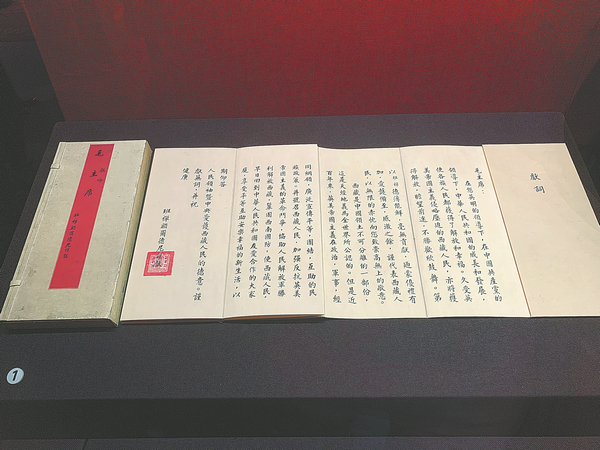

Particularly, there are documents from imperial courts of the Yuan (1271-1368), Ming (1368-1644), Qing (1644-1911) dynasties and under the Kuomintang's rule during the first half of the 20th century to grant local officials from ethnic groups, as well as reports from the local officials to the central governments in turn.
Many of these documents were bilingual, written in both Chinese characters and the written languages of the Tibetans, Manchus, the Mongols, and the Chagatai language, one that was once used in what is now the Xinjiang Uygur autonomous region and Central Asia, but has disappeared.
Also highlighted at the exhibition are a display of around 100 gifts ethnic groups sent to the Party, the central government and top leaders since the founding of the People's Republic of China in 1949.
Most of the gifts represent strong regional and cultural distinctions. For example, those pieces from Manchu, Oroqen, Daur and Hezhe peoples who mainly live in Northeast China have conveyed their nomadic, fishing and hunting culture and lifestyle.
The morin khuur (horse-head fiddle), sent by Mongol representatives in the 1950s, has Buddhist patterns on its neck and the Chinese character shou, meaning longevity, and patterns of bats, reflecting a mixed cultural tradition. One of the two characters for bats in Chinese sounds like fu, meaning a "good fate".
Besides, there are several letters between Chairman Mao Zedong and Qurban Tulum (1883-1975), a farmer from Xinjiang, in the 1950s and '60s.